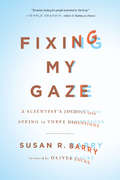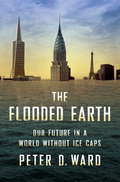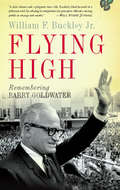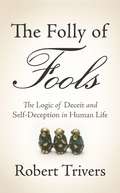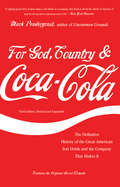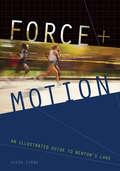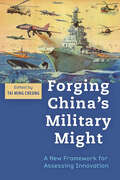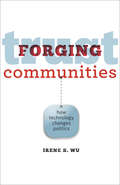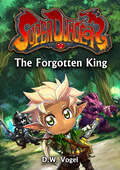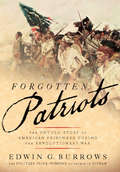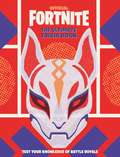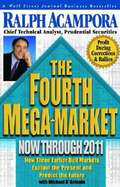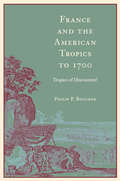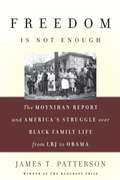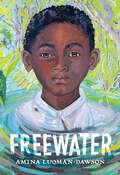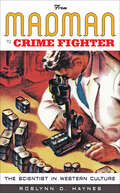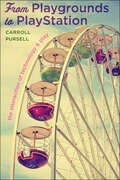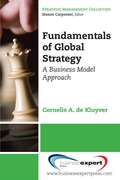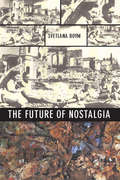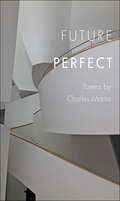- Table View
- List View
Fixing My Gaze: A Scientist's Journey Into Seeing in Three Dimensions
by Susan R. BarryA revelatory account of the brain's capacity for changeWhen neuroscientist Susan Barry was fifty years old, she experienced the sense of immersion in a three dimensional world for the first time. Skyscrapers on street corners appeared to loom out toward her like the bows of giant ships. Tree branches projected upward and outward, enclosing and commanding palpable volumes of space. Leaves created intricate mosaics in 3D. Barry had been cross-eyed and stereoblind since early infancy. After half a century of perceiving her surroundings as flat and compressed, on that day she saw the city of Manhattan in stereo depth for first time in her life. As a neuroscientist, she understood just how extraordinary this transformation was, not only for herself but for the scientific understanding of the human brain. Scientists have long believed that the brain is malleable only during a "critical period" in early childhood. According to this theory, Barry's brain had organized itself when she was a baby to avoid double vision - and there was no way to rewire it as an adult. But Barry found an optometrist who prescribed a little-known program of vision therapy; after intensive training, Barry was ultimately able to accomplish what other scientists and even she herself had once considered impossible. Dubbed "Stereo Sue" by renowned neurologist Oliver Sacks, Susan Barry tells her own remarkable journey and celebrates the joyous pleasure of our senses.
The Flooded Earth: Our Future In a World Without Ice Caps
by Peter D. WardSea level rise will happen no matter what we do. Even if we stopped all carbon dioxide emissions today, the seas would rise one meter by 2050 and three meters by 2100. This-not drought, species extinction, or excessive heat waves-will be the most catastrophic effect of global warming. And it won't simply redraw our coastlines-agriculture, electrical and fiber optic systems, and shipping will be changed forever. As icebound regions melt, new sources of oil, gas, minerals, and arable land will be revealed, as will fierce geopolitical battles over who owns the rights to them.In The Flooded Earth, species extinction expert Peter Ward describes in intricate detail what our world will look like in 2050, 2100, 2300, and beyond-a blueprint for a foreseeable future. Ward also explains what politicians and policymakers around the world should be doing now to head off the worst consequences of an inevitable transformation.
Flying High: Remembering Barry Goldwater
by William F. Buckley Jr.In Flying High, William F. Buckley Jr. offers his lyrical remembrance of a singular era in American politics, and a tribute to the modern Conservative movement's first presidential standard-bearer, Barry Goldwater. Goldwater was in many ways the perfect candidate: self-reliant, unpretentious, unshakably honest, and dashingly handsome. And although he lost the election, he electrified millions of voters with his integrity and a sense of decency-qualities that made him a natural spokesman for Conservative ideals and an inspiration for decades to come.In an era when Republicans are looking for a leader, Flying High is a reminder of how real political visionaries inspire devotion.
Flying High: Remembering Barry Goldwater
by William F. Buckley Jr.If any two people can be called indispensable in launching the conservative movement in American politics, they are William F. Buckley Jr. and Barry Goldwater. Buckley's National Review was at the center of conservative political analysis from the mid-fifties onward. But the policy intellectuals knew that to actually change the way the country was run, they needed a presidential candidate, and the man they turned to was Arizona Senator Barry Goldwater. Goldwater was in many ways the perfect choice: self-reliant, unpretentious, unshakably honest and dashingly handsome, with a devoted following that grew throughout the fifties and early sixties. He possessed deep integrity and a sense of decency that made him a natural spokesman for conservative ideals. But his flaws were a product of his virtues. He wouldn't't bend his opinions to make himself more popular, he insisted on using his own inexperienced advisors to run his presidential campaign, and in the end he electrified a large portion of the electorate but lost the great majority. Flying High is Buckley's partly fictional tribute to the man who was in many ways his alter ego in the conservative movement. It is the story of two men who looked as if they were on the losing side of political events, but were kept aloft by the conviction that in fact they were making history.
The Folly of Fools: The Logic of Deceit and Self-Deception in Human Life
by Robert TriversA New York Times Notable Book of 2012Whether it&’s in a cockpit at takeoff or the planning of an offensive war, a romantic relationship or a dispute at the office, there are many opportunities to lie and self-deceive—but deceit and self-deception carry the costs of being alienated from reality and can lead to disaster. So why does deception play such a prominent role in our everyday lives? In short, why do we deceive?In his bold new work, prominent biological theorist Robert Trivers unflinchingly argues that self-deception evolved in the service of deceit—the better to fool others. We do it for biological reasons—in order to help us survive and procreate. From viruses mimicking host behavior to humans misremembering (sometimes intentionally) the details of a quarrel, science has proven that the deceptive one can always outwit the masses. But we undertake this deception at our own peril.Trivers has written an ambitious investigation into the evolutionary logic of lying and the costs of leaving it unchecked.
For God, Country, and Coca-Cola: The Definitive History Of The Great American Soft Drink And The Company That Makes It
by Mark PendergrastFor God, Country and Coca-Cola is the unauthorized history of the great American soft drink and the company that makes it. From its origins as a patent medicine in Reconstruction Atlanta through its rise as the dominant consumer beverage of the American century, the story of Coke is as unique, tasty, and effervescent as the drink itself. With vivid portraits of the entrepreneurs who founded the company-and of the colorful cast of hustlers, swindlers, ad men, and con men who have made Coca-Cola the most recognized trademark in the world-this is business history at its best: in fact, "The Real Thing.”
Force and Motion: An Illustrated Guide to Newton's Laws
by Jason ZimbaIsaac Newton developed three laws of motion that govern the everyday world. These laws are usually presented in purely mathematical forms, but Jason Zimba breaks with tradition and treats them visually. This unique approach allows students to appreciate the conceptual underpinnings of each law before moving on to qualitative descriptions of motion and, finally, to the equations and their solutions.Zimba has organized the book into seventeen brief and well-sequenced lessons, which focus on simple, manageable topics and delve into areas that often cause students to stumble. Each lesson is followed by a set of original problems that have been student-tested and refined over twenty years. Zimba illustrates the laws with more than 350 diagrams, an innovative presentation that offers a fresh way to teach the fundamentals in introductory physics, mechanics, and kinematics courses.
Forged: An Altered Series Prequel (Altered)
by Jennifer RushBefore Anna and Sam, there was Dani and Sam.There's one rule that all Branch operatives must live by: No attachments. When Dani O'Brien entered the Branch, she planned to trade her freedom so that her family could have a better life. But joining up with the mysterious organization is more than she bargained for. Branch head Connor watches over her closely--too closely. The training is brutal, the experiments are secret, and the missions promise to be anything but ordinary. The only thing getting Dani through each day is the hope that she'll run into Sam--a young man, about her age, who wears the world on his shoulders.Find out how it all began in this short-story prequel to Jennifer Rush's thrilling and suspenseful Altered series.
Forging China's Military Might: A New Framework for Assessing Innovation
by Tai Ming CheungAmong the most important issues in international security today are the nature and the global implications of China’s emergence as a world-class defense technology power. Since the beginning of the twenty-first century, the Chinese defense industry has reinvented itself by emphasizing technological innovation and technology. This reinvention and its potential effects, both positive and negative, are attracting global scrutiny. Drawing insights from a range of disciplines, including history, social science, business, and strategic studies, Tai Ming Cheung and the contributors to Forging China's Military Might develop an analytical framework to evaluate the nature, dimensions, and spectrum of Chinese innovation in the military and broader defense spheres. Forging China's Military Might provides an overview of the current state of the Chinese defense industry and then focuses on subjects critical to understanding short- and long-term developments, including the relationship among defense contractors, regulators, and end-users; civil-military integration; China’s defense innovation system; and China’s place in the global defense economy. Case studies look in detail at the Chinese space and missile industry.
Forging China's Military Might: A New Framework for Assessing Innovation
by Tai Ming CheungAmong the most important issues in international security today are the nature and the global implications of China’s emergence as a world-class defense technology power. Since the beginning of the twenty-first century, the Chinese defense industry has reinvented itself by emphasizing technological innovation and technology. This reinvention and its potential effects, both positive and negative, are attracting global scrutiny. Drawing insights from a range of disciplines, including history, social science, business, and strategic studies, Tai Ming Cheung and the contributors to Forging China's Military Might develop an analytical framework to evaluate the nature, dimensions, and spectrum of Chinese innovation in the military and broader defense spheres. Forging China's Military Might provides an overview of the current state of the Chinese defense industry and then focuses on subjects critical to understanding short- and long-term developments, including the relationship among defense contractors, regulators, and end-users; civil-military integration; China’s defense innovation system; and China’s place in the global defense economy. Case studies look in detail at the Chinese space and missile industry.
Forging Trust Communities: How Technology Changes Politics
by Irene S. WuBloggers in India used social media and wikis to broadcast news and bring humanitarian aid to tsunami victims in South Asia. Terrorist groups like ISIS pour out messages and recruit new members on websites. The Internet is the new public square, bringing to politics a platform on which to create community at both the grassroots and bureaucratic level. Drawing on historical and contemporary case studies from more than ten countries, Irene S. Wu’s Forging Trust Communities argues that the Internet, and the technologies that predate it, catalyze political change by creating new opportunities for cooperation. The Internet does not simply enable faster and easier communication, but makes it possible for people around the world to interact closely, reciprocate favors, and build trust. The information and ideas exchanged by members of these cooperative communities become key sources of political power akin to military might and economic strength. Wu illustrates the rich world history of citizens and leaders exercising political power through communications technology. People in nineteenth-century China, for example, used the telegraph and newspapers to mobilize against the emperor. In 1970, Taiwanese cable television gave voice to a political opposition demanding democracy. Both Qatar (in the 1990s) and Great Britain (in the 1930s) relied on public broadcasters to enhance their influence abroad. Additional case studies from Brazil, Egypt, the United States, Russia, India, the Philippines, and Tunisia reveal how various technologies function to create new political energy, enabling activists to challenge institutions while allowing governments to increase their power at home and abroad. Forging Trust Communities demonstrates that the way people receive and share information through network communities reveals as much about their political identity as their socioeconomic class, ethnicity, or religion. Scholars and students in political science, public administration, international studies, sociology, and the history of science and technology will find this to be an insightful and indispensable work.
The Forgotten King
by D. W. VogelFrom the epic fantasy world of Super Dungeon comes the second novel in the series. Based on the board game Super Dungeon Explore, this hilarious children's series follows the adventures of questing heroes as they take down evil and rescue the missing princesses of Crystalia.
Forgotten Patriots: The Untold Story of American Prisoners During the Revolutionary War (Playaway Adult Nonfiction Ser.)
by Edwin G. BurrowsBetween 1775 and 1783, some 200,000 Americans took up arms against the British Crown. Just over 6,800 of those men died in battle. About 25,000 became prisoners of war, most of them confined in New York City under conditions so atrocious that they perished by the thousands. Evidence suggests that at least 17,500 Americans may have died in these prisons-more than twice the number to die on the battlefield. It was in New York, not Boston or Philadelphia, where most Americans gave their lives for the cause of independence.New York City became the jailhouse of the American Revolution because it was the principal base of the Crown's military operations. Beginning with the bumper crop of American captives taken during the 1776 invasion of New York, captured Americans were stuffed into a hastily assembled collection of public buildings, sugar houses, and prison ships. The prisoners were shockingly overcrowded and chronically underfed-those who escaped alive told of comrades so hungry they ate their own clothes and shoes.Despite the extraordinary number of lives lost, Forgotten Patriots is the first-ever account of what took place in these hell-holes. The result is a unique perspective on the Revolutionary War as well as a sobering commentary on how Americans have remembered our struggle for independence-and how much we have forgotten.
FORTNITE (Official): The Ultimate Trivia Book
by Epic GamesAre you a true Fortnite expert? Find out in this official Epic Games trivia book, featuring the authentic Fortnite holographic seal.Packed with hundreds of quiz questions in five different levels of difficulty, this official trivia book from Epic Games is jam-packed with Battle Royale brainteasers to test your Fortnite expertise. Whether you're new to the game or an old hand, these questions will level up your knowledge and provide hours of fun. Are you up for the challenge? Your trivia test starts here!
The Fourth Mega-Market, Now Through 2011: How Three Earlier Bull Markets Explain the Present and Predict the Future
by Ralph Acampora Michael D'AngeloA proven leader in the financial world explains the current bull market--and how to profit from it--by comparing it to the great bull markets of the past.Were you surprised by Wall Street's incredible performance over the past few years? Ralph Acampora wasn't. In fact, Acampora, Prudential's top technical analyst, predicted the current bullish trend--and helped countless clients profit from it. Now you can too.Acampora coined the term mega-market to describe a bull market that lasts a minimum of ten years and a maximum of eighteen years with Dow gains of between 400% and 500%. In The Fourth Mega-Market, Acampora helps readers take advantage of the staggering performance of the current market by showing its similarities with the three previous mega-markets in American history. In an entertaining and straight-forward style, and with a wealth of informative charts and graphs, he helps readers recognize patterns that can explain market performance, showing how to use technical analysis to "hear the voices" of the market. He offers valuable tips, such as how to spot and protect yourself from a correction; how psychology and politics influence the market; and how to analyze the performance of various market segments. Finally, he makes exciting predictions on just where the market will go before it ends and how it will get there, giving specific recommendations. While today's information overload keeps us on the edge of our seats, scanning the numbers for subtle clues as to the market's next seismic shift, Ralph Acampora shows us the value of a larger perspective, one that not only explains today's mega-market, but also shows us how to keep investing our money wisely and ride high on the current wave.
France and the American Tropics to 1700: Tropics of Discontent?
by Philip P. BoucherTraditionally, the story of the Greater Caribbean has been dominated by the narrative of Iberian hegemony, British colonization, the plantation regime, and the Haitian Revolution of the eighteenth century. Relatively little is known about the society and culture of this region—and particularly France's role in them—in the two centuries prior to the rise of the plantation complex of the eighteenth century. Here, historian Philip P. Boucher offers the first comprehensive account of colonization and French society in the Caribbean. Boucher's analysis contrasts the structure and character of the French colonies with that of other colonial empires. Describing the geography, topography, climate, and flora and fauna of the region, Boucher recreates the tropical environment in which colonists and indigenous peoples interacted. He then examines the lives and activities of the region's inhabitants—the indigenous Island Caribs, landowning settlers, indentured servants, African slaves, and people of mixed blood, the gens de couleur. He argues that the sixteenth and seventeenth centuries were not merely a prelude to the classic plantation regime model. Rather, they were an era presenting a variety of possible outcomes. This original narrative demonstrates that the transition to sugar and the plantation complex was more gradual in the French properties than generally depicted—and that it was not inevitable.
Freedom Is Not Enough: The Moynihan Report and America's Struggle over Black Family Life--from LBJ to Obama
by James T. PattersonOn June 4, 1965, President Lyndon Johnson delivered what he and many others considered the greatest civil rights speech of his career. Proudly, Johnson hailed the new freedoms granted to African Americans due to the newly passed Civil Rights Act and Voting Rights Act, but noted that "freedom is not enough.” The next stage of the movement would be to secure racial equality "as a fact and a result.”The speech was drafted by an assistant secretary of labor by the name of Daniel Patrick Moynihan, who had just a few months earlier drafted a scorching report on the deterioration of the urban black family in America. When that report was leaked to the press a month after Johnson's speech, it created a whirlwind of controversy from which Johnson's civil rights initiatives would never recover. But Moynihan's arguments proved startlingly prescient, and established the terms of a debate about welfare policy that have endured for forty-five years.The history of one of the great missed opportunities in American history, Freedom Is Not Enough will be essential reading for anyone seeking to understand our nation's ongoing failure to address the tragedy of the black underclass.
Freedom Is Not Enough: The Moynihan Report and America's Struggle over Black Family Life -- from LBJ to Obama
by James T. PattersonOn June 4, 1965, President Lyndon Johnson delivered what he and many others considered the greatest civil rights speech of his career. Proudly, Johnson hailed the new freedoms granted to African Americans due to the newly passed Civil Rights Act and Voting Rights Act, but noted that "freedom is not enough." The next stage of the movement would be to secure racial equality "as a fact and a result." The speech was drafted by an assistant secretary of labor by the name of Daniel Patrick Moynihan, who had just a few months earlier drafted a scorching report on the deterioration of the urban black family in America. When that report was leaked to the press a month after Johnson's speech, it created a whirlwind of controversy from which Johnson's civil rights initiatives would never recover. But Moynihan's arguments proved startlingly prescient, and established the terms of a debate about welfare policy that have endured for forty-five years. The history of one of the great missed opportunities in American history, Freedom Is Not Enough will be essential reading for anyone seeking to understand our nation's ongoing failure to address the tragedy of the black underclass.
Freewater
by Amina Luqman-DawsonWinner of the John Newbery Medal Winner of the Coretta Scott King Author Award Award-winning author Amina Luqman-Dawson pens a lyrical, accessible historical middle-grade novel about two enslaved children&’s escape from a plantation and the many ways they find freedom. After an entire young life of enslavement, twelve-year-old Homer escapes Southerland Plantation with his little sister Ada, leaving his beloved mother behind. Much as he adores her and fears for her life, Homer knows there&’s no turning back, not with the overseer on their trail. Through tangled vines, secret doorways, and over a sky bridge, the two find a secret community called Freewater, deep in the recesses of the swamp. In this new, free society made up of escaped slaves and some born-free children, Homer cautiously embraces a set of spirited friends, almost forgetting where he came from. But when he learns of a threat that could destroy Freewater, he hatches a plan to return to Southerland plantation, overcome his own cautious nature, and free his mother from enslavement. Loosely based on a little-mined but important piece of history, this is an inspiring and deeply empowering story of survival, love, and courage.
From Madman to Crime Fighter: The Scientist in Western Culture
by Roslynn D. HaynesThey were mad, of course. Or evil. Or godless, amoral, arrogant, impersonal, and inhuman. At best, they were well intentioned but blind to the dangers of forces they barely controlled. They were Faust and Frankenstein, Jekyll and Moreau, Caligari and Strangelove;¢;‚¬;€?the scientists of film and fiction, cultural archetypes that reflected ancient fears of tampering with the unknown or unleashing the little-understood powers of nature.In From Madman to Crime Fighter, Roslynn D. Haynes analyzes stereotypical characters;¢;‚¬;€?including the mad scientist, the cold-blooded pursuer of knowledge, the intrepid pathbreaker, and the bumbling fool;¢;‚¬;€?that, from medieval times to the present day, have been used to depict the scientist in Western literature and film. She also describes more realistically drawn scientists, characters who are conscious of their public responsibility to expose dangers from pollution and climate change yet fearful of being accused of lacking evidence.Drawing on examples from Britain, America, Germany, France, Russia, and elsewhere, Haynes explores the persistent folklore of mad doctors of science and its relation to popular fears of a depersonalized, male-dominated, and socially irresponsible pursuit of knowledge for its own sake. She concludes that today;€™s public response to science and scientists;¢;‚¬;€?much of it negative;¢;‚¬;€?is best understood by recognizing the importance of such cultural archetypes and their significance as myth. From Madman to Crime Fighter is the most comprehensive study of the image of the scientist in Western literature and film.
From Madman to Crime Fighter: The Scientist in Western Culture
by Roslynn D. HaynesThey were mad, of course. Or evil. Or godless, amoral, arrogant, impersonal, and inhuman. At best, they were well intentioned but blind to the dangers of forces they barely controlled. They were Faust and Frankenstein, Jekyll and Moreau, Caligari and Strangelove;¢;‚¬;€?the scientists of film and fiction, cultural archetypes that reflected ancient fears of tampering with the unknown or unleashing the little-understood powers of nature.In From Madman to Crime Fighter, Roslynn D. Haynes analyzes stereotypical characters;¢;‚¬;€?including the mad scientist, the cold-blooded pursuer of knowledge, the intrepid pathbreaker, and the bumbling fool;¢;‚¬;€?that, from medieval times to the present day, have been used to depict the scientist in Western literature and film. She also describes more realistically drawn scientists, characters who are conscious of their public responsibility to expose dangers from pollution and climate change yet fearful of being accused of lacking evidence.Drawing on examples from Britain, America, Germany, France, Russia, and elsewhere, Haynes explores the persistent folklore of mad doctors of science and its relation to popular fears of a depersonalized, male-dominated, and socially irresponsible pursuit of knowledge for its own sake. She concludes that today;€™s public response to science and scientists;¢;‚¬;€?much of it negative;¢;‚¬;€?is best understood by recognizing the importance of such cultural archetypes and their significance as myth. From Madman to Crime Fighter is the most comprehensive study of the image of the scientist in Western literature and film.
From Playgrounds to PlayStation: The Interaction of Technology and Play
by Carroll PursellIn this romp through the changing landscape of nineteenth- and twentieth-century American toys, games, hobbies, and amusements, senior historian of technology Carroll Pursell poses a simple but interesting question: What can we learn by studying the relationship between technology and play? From Playgrounds to PlayStation explores how play reflects and drives the evolution of American culture. Pursell engagingly examines the ways in which technology affects play and play shapes people. The objects that children (and adults) play with and play on, along with their games and the hobbies they pursue, can reinforce but also challenge gender roles and cultural norms. Inventorsâ€�who often talk about "playing" at their work, as if motivated by the pure fun of inventionâ€�have used new materials and technologies to reshape sports and gameplay, sometimes even crafting new, extreme forms of recreation, but always responding to popular demand.Drawing from a range of sources, including scholarly monographs, patent records, newspapers, and popular and technical journals, the book covers numerous modes and sites of play. Pursell touches on the safety-conscious playground reform movement, the dazzling mechanical innovations that gave rise to commercial amusement parks, and the media’s colorful promotion of toys, pastimes, and sporting events. Along the way, he shows readers how technology enables the forms, equipment, and devices of play to evolve constantly, both reflecting consumer choices and driving innovators and manufacturers to promote toys that involve entirely new kinds of playâ€�from LEGOs and skateboards to beading kits and videogames.
Fundamentals of Global Strategy
by Cornelis A. de KluyverThis book looks at the opportunities and risks associated with staking out a global competitive presence and introduces the fundamentals of global strategic thinking. We define crafting a global strategy in terms of change: how a company should change and adapt its core (domestic) business model to achieve a competitive advantage as it expands globally. The conceptual framework behind this definition has three fundamental building blocks: a company's core business model, the various strategic decisions a company needs to make as it globalizes its operations, and a range of globalization strategies for creating a global competitive advantage. A business model is defined in terms of four principal components: (a) market participation--who its customers are, how it reaches them and relates to them; (b) the value proposition--what a company offers its customers; (c) the supply chain infrastructure--with what resources, activities and partners it creates its offerings; and finally, (d) its management model--how it organizes and coordinates its operations. Globalization requires a company to make strategic decisions about each component of the business model. Market participation decisions include choosing which specific markets or segments to serve, domestically or abroad; what methods of distribution to use to reach target customers; and how to promote and advertise the value proposition. Globalization decisions about the value proposition touch the full range of tangible and intangible benefits a company provides to its customers (stakeholders). Decisions about a company's value chain infrastructure deal with such questions as, What key internal resources and capabilities has the company created to support the chosen value proposition and target markets? What partner network has it assembled to support the business model? How are these activities organized into an overall, coherent value creation and delivery model? Finally, strategic decisions about the global management dimension are concerned with a company's choices about a suitable global organizational structure and decision-making process. We use Pankaj Ghemawat's well-known "AAA Triangle" framework to define three generic approaches to global value creation. Adaptation strategies seek to increase revenues and market share by tailoring one or more components of a company's business model to suit local requirements or preferences. Aggregation strategies focus on achieving economies of scale or scope by creating regional or global efficiencies; they typically involve standardizing a significant portion of the value proposition and grouping together development and production processes. Arbitrage is about exploiting economic or other differences between national or regional markets, usually by locating separate parts of the supply chain in different places.
The Future of Nostalgia
by Svetlana BoymCombining personal memoir, philosophical essay, and historical analysis, Svetlana Boym explores the spaces of collective nostalgia that connect national biography and personal self-fashioning in the twenty-first century. She guides us through the ruins and construction sites of post-communist cities--St. Petersburg, Moscow, Berlin, and Prague--and the imagined homelands of exiles-Benjamin, Nabokov, Mandelstahm, and Brodsky. From Jurassic Park to the Totalitarian Sculpture Garden, Boym unravels the threads of this global epidemic of longing and its antidotes.
Future Perfect (Johns Hopkins: Poetry and Fiction)
by Charles MartinTo be modern is to live not in a single era, but in a churn of new technologies, deep history, myth, literary traditions, and contemporary cultural memes. In Future Perfect, Charles Martin;€™s darkly comic new collection, the poet explores our time and the times that come before and after, which we inhabit and cultivate in memory and imagination. Through poems that play with form and challenge expectation, Martin examines the continuities that persist from time immemorial to the future perfect.Sensitive to the traces left behind by the lives of his characters, Martin follows their tracks, reflections, echoes, and shadows. In "From Certain Footprints Found at Laetoli," an ancient impression preserved in volcanic ash conjures up a family scene three million years past. In "The Last Resort of Mr. Kees" and "Mr. Kees Goes to a Party," Martin adopts the persona of the vanished poet Weldon Kees to reimagine his disappearance. "Letter from Komarovo, 1962" retells the tense real-life meeting between Anna Akhmatova and Robert Frost a year before their nations almost destroyed one another. And in the titular sonnet sequence that ends the book, Martin conjures a childhood in the Bronx under the shadow of the mushroom cloud of nuclear war as the perfected future supplanting the present.Introducing Buck Rogers to Randall Jarrell and combining new translations or reinterpretations of works by Ovid, G. G. Belli, Octavio Paz, and Euripides, Future Perfect further establishes Charles Martin as a master of invention.
